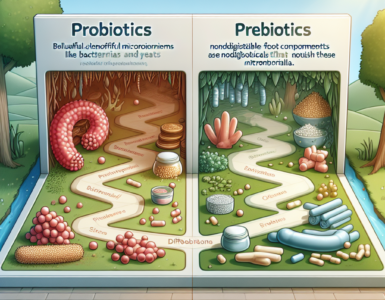Motivation plays a vital role in personal and professional success. It’s the driving force that compels us to take action towards our goals, even when faced with challenges. However, motivating oneself is not always easy, and many individuals struggle to maintain their enthusiasm and drive over time. In this article, we will explore seven proven strategies you can use to increase your motivation and achieve your desired outcomes.
Understanding the Importance of Motivation
Motivation is often described as a psychological state that energizes and directs behavior towards a particular goal. It is what pushes people to go beyond their comfort zones, take action, and achieve their aspirations. However, motivation is not always consistent, and people often experience fluctuations in their energy levels and enthusiasm.
The role of motivation in personal and professional success
Without motivation, individuals may feel disengaged, uninspired, and lack the drive needed to succeed. On the other hand, individuals who are highly motivated tend to be more productive, creative, and persistent in their pursuit of success.
For example, let’s say you have a personal goal of losing weight. Without motivation, you may find yourself skipping workouts, eating unhealthy foods, and ultimately failing to achieve your desired weight loss. However, if you are highly motivated, you may find yourself waking up early to hit the gym, meal prepping healthy meals, and ultimately achieving your weight loss goals.
In a professional setting, motivation is equally important. A motivated employee is more likely to be engaged, productive, and committed to their work. They are also more likely to take on challenges, learn new skills, and ultimately advance in their career.
Identifying your motivation triggers
Before delving into strategies for increasing motivation, it’s essential to understand what drives you. Ask yourself, “what motivates me? What are the reasons I want to achieve my goals?” Identifying these triggers can help you tap into your inner drive and remain focused and committed towards your objectives.
For some individuals, their motivation may come from a desire to prove themselves to others or to achieve financial stability. For others, it may be a desire to help others, make a difference in the world, or to achieve personal growth and self-improvement.
It’s important to note that motivation can also be influenced by external factors such as stress, lack of support, or a negative work environment. In these cases, it may be necessary to address these issues before focusing on increasing motivation.
Overall, understanding the importance of motivation and identifying your personal motivation triggers can help you achieve success in both your personal and professional life.
Strategy 1: Set Clear and Specific Goals
The first strategy for increasing motivation is setting clear and specific goals. Vague goals can leave you feeling overwhelmed, confused, and unsure of where to start. However, setting clear objectives that are specific, measurable, achievable, relevant, and time-bound (SMART) can help you stay focused and motivated throughout the entire goal completion process.
The power of SMART goals
SMART goals provide a roadmap for tracking progress, celebrating wins, and achieving success. With defined parameters, you can break down your goals into smaller, manageable steps that will keep you motivated and on track.
For example, let’s say your goal is to run a marathon. A SMART goal for this could be: “I will run a marathon in six months by running 5 miles every day, increasing my mileage by 10% each week, and participating in a half-marathon as a training milestone.”
Breaking down goals into manageable steps
Breaking down large goals into smaller tasks creates a sense of achievement, and each completed step can boost motivation and increase your sense of progress. Even when encountering obstacles, a clear goal and plan will help you stay motivated and inspired to keep pushing forward.
Using the marathon example, breaking down the goal into smaller tasks could include: researching and selecting a training plan, purchasing proper running shoes and gear, finding a running buddy or group for accountability, and tracking progress through a running app or journal.
Additionally, setting rewards for each completed step can also increase motivation. For example, after completing the first month of training, treat yourself to a massage or a new piece of running gear.
In conclusion, setting clear and specific goals using the SMART framework and breaking them down into manageable steps can increase motivation and help you achieve success. Remember to celebrate each step along the way and reward yourself for your hard work!
Strategy 2: Find Your “Why”
Another powerful way to increase motivation is by finding your “why.” Understanding why you want to achieve your goals can help unlock your inner drive and help you stay motivated when things get tough.
Connecting with your core values
Identifying your core values and how your goals align with them can provide greater meaning and motivation behind your efforts. Think deeply about the reasons behind your goals, how they align with your values, and the impact they will have on your life and the lives of those around you.
For example, if one of your core values is family, you may be motivated to work hard and achieve success in your career so that you can provide for your loved ones and create a better life for them. Understanding this connection between your values and your goals can help you stay focused and motivated, even when the going gets tough.
Visualizing your desired outcome
Visualization is another effective technique for finding motivation. Developing a clear mental image of your desired outcome can help you focus your energy and motivate you to take action.
For instance, if your goal is to run a marathon, visualize yourself crossing the finish line with your arms raised in triumph. Imagine the sense of accomplishment and satisfaction you will feel, and use that feeling to motivate yourself to train hard and push through the tough moments.
Visualization can also help you overcome obstacles and setbacks. If you encounter a setback in your goal pursuit, close your eyes and visualize yourself overcoming the obstacle and continuing on your path towards success. This can help you stay motivated and focused on your goals, even in the face of adversity.
In conclusion, finding your “why” and visualizing your desired outcome are powerful tools for increasing motivation and achieving success. By connecting with your core values and developing a clear mental image of your goals, you can unlock your inner drive and stay motivated on your journey towards success.
Strategy 3: Create a Supportive Environment
Creating an environment that supports your goals and fosters your motivation is crucial. It is important to remember that your environment can have a significant impact on your mindset and overall productivity. Surrounding yourself with positive influences, creating a conducive physical and digital environment, and eliminating distractions can provide a supportive and motivating atmosphere to maximize your focus and productivity.
Surrounding yourself with positive influences
Surrounding yourself with individuals who are supportive, inspiring, and share similar goals can help you stay inspired and motivated, especially during challenging times. When you surround yourself with positive influences, you are more likely to stay motivated and focused on your goals. Positive influences can come in various forms, such as friends, family, colleagues, or mentors. It is essential to find people who will encourage and support you on your journey.
One way to find positive influences is to join a community or group that shares similar interests or goals. For instance, if your goal is to become a successful entrepreneur, joining a business group or attending networking events can help you meet like-minded individuals who can offer support and guidance.
Organizing your physical and digital spaces
Cluttered spaces can lead to feeling disengaged, unproductive, and lack motivation. Organizing your physical and digital spaces can help you focus, maximize productivity, and increase your motivation to take on tasks and achieve your goals.
When it comes to physical spaces, it is essential to keep your workspace clean and organized. A cluttered desk can be distracting and make it challenging to focus on tasks. Keeping your workspace organized can help you stay focused and motivated to complete your work efficiently. You can also add some personal touches, such as plants or pictures, to make your workspace comfortable and inspiring.
As for digital spaces, it is crucial to organize your files and folders on your computer or mobile device. Having a cluttered digital space can make it difficult to find the files you need, leading to frustration and decreased productivity. You can also use productivity tools such as calendars, to-do lists, and project management software to help you stay organized and focused on your tasks.
In conclusion, creating a supportive environment is crucial to stay motivated and focused on your goals. Surrounding yourself with positive influences, organizing your physical and digital spaces, and eliminating distractions can help you create a conducive atmosphere for productivity and success.
Strategy 4: Develop a Growth Mindset
Individuals with a growth mindset embrace challenges, learn from failure, and thrive on continuous improvement. Developing a growth mindset can increase motivation by providing a positive perspective, regardless of the obstacle.
Embracing challenges and learning from failures
Obstacles can often lead to feelings of frustration or disappointment. However, a growth mindset views obstacles as an opportunity for learning and development. When faced with a challenge, take a step back and assess the situation. Identify the problem and brainstorm potential solutions. Don’t be afraid to try new things and take risks. Remember, failure is not the end, but rather an opportunity to learn and grow. Analyze the situation, reflect on what went wrong, and use it as motivation to find new solutions.
For example, imagine you are working on a project at work and you encounter a problem that you cannot solve. Instead of giving up, take a moment to reflect on what went wrong. Did you miss a step in the process? Did you overlook an important detail? Use this as an opportunity to learn and grow. Research potential solutions, seek feedback from colleagues, and try again with a fresh perspective.
Cultivating a passion for continuous improvement
Growth is a continual process, and individuals with a growth mindset are motivated by the opportunity to continuously improve and better themselves. Embrace learning opportunities, seek out new experiences, and find inspiration in the journey of self-growth.
For example, take a course or attend a workshop to develop a new skill. Join a club or organization to meet new people and expand your horizons. Travel to new places and experience different cultures. Read books or listen to podcasts to gain new knowledge and insights. Embrace the journey of self-growth and never stop learning.
Remember, developing a growth mindset takes time and effort. It requires a willingness to learn, a positive attitude, and a commitment to continuous improvement. But with dedication and perseverance, you can cultivate a growth mindset and achieve your goals.
Conclusion
Increasing motivation takes time and effort, but it can be achieved through a combination of strategies that align with your personal values and goals. Whether focusing on specific and measurable goals, finding your “why,” creating a supportive environment, or developing a growth mindset, each of the strategies mentioned above can help increase motivation and drive success.











